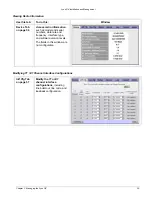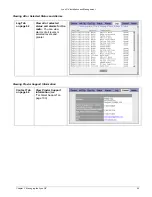
Lynx.GX Installation and Management
This example uses the default addresses of 10.0.0.1 for the near end radio, and 10.10.0.x for the far end radio.
This is a temporary static route. To make it permanent, add this as a batch file to run at system startup. The
GX radios use RIP to learn routes automatically in your network. Remember, this extended NMS network is
available only while the wireless link is up.
Note:
If both radios are set to the same IP subnet, no NMS data passes across the wireless link and
management of both units at the same time requires another network path. In this setup, the end user
has the near-end and the far-end status through the near-end browser, but cannot change configuration
of the far-end radio from the near-end radio. This is not a recommended means to manage the radios.
Helpful Configuration Hints
▪
You must set Tx Power to meet required EIRP limits or RSL requirements.
▪
You must set IP Address and Subnet Mask to conform to your network. You also must set the Default
Gateway Address if your monitoring stations will be on a different IP subnet from the GX radio.
▪
If you have a T1 radio, you must set the appropriate Line Code and Line Buildout setting.
▪
To aid in troubleshooting possible problems, Proxim recommends you set System Date and Time to provide
correct timestamps for Log Messages.
▪
For greater security, Proxim recommends changing the Configuration Password. Also, use a unique Link
Security Code for each link of radios.
▪
To avoid alarms on unused channels, Proxim recommends disabling the Input Alarm on all unused
channels.
Chapter 3. Managing the Lynx.GX
37









































